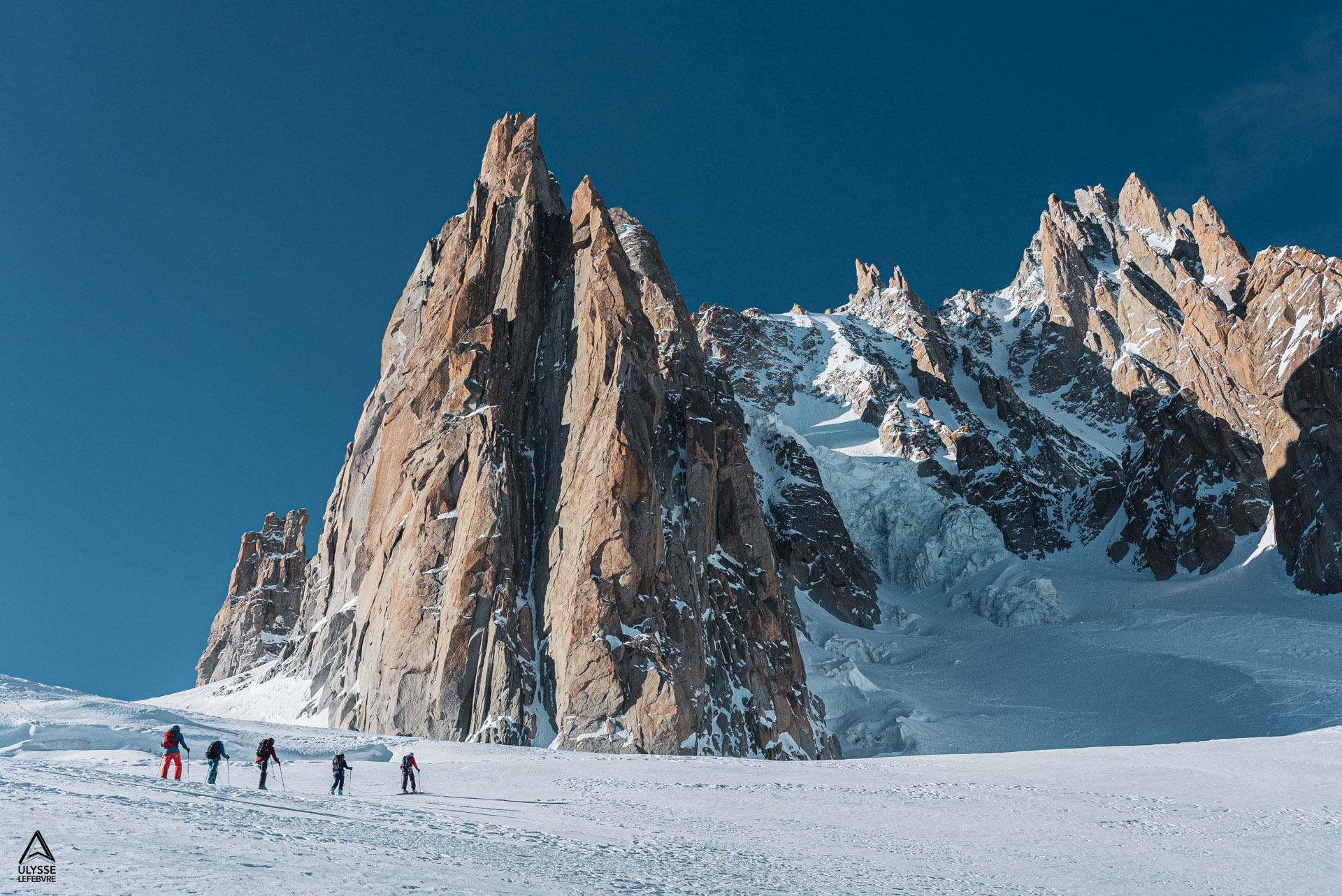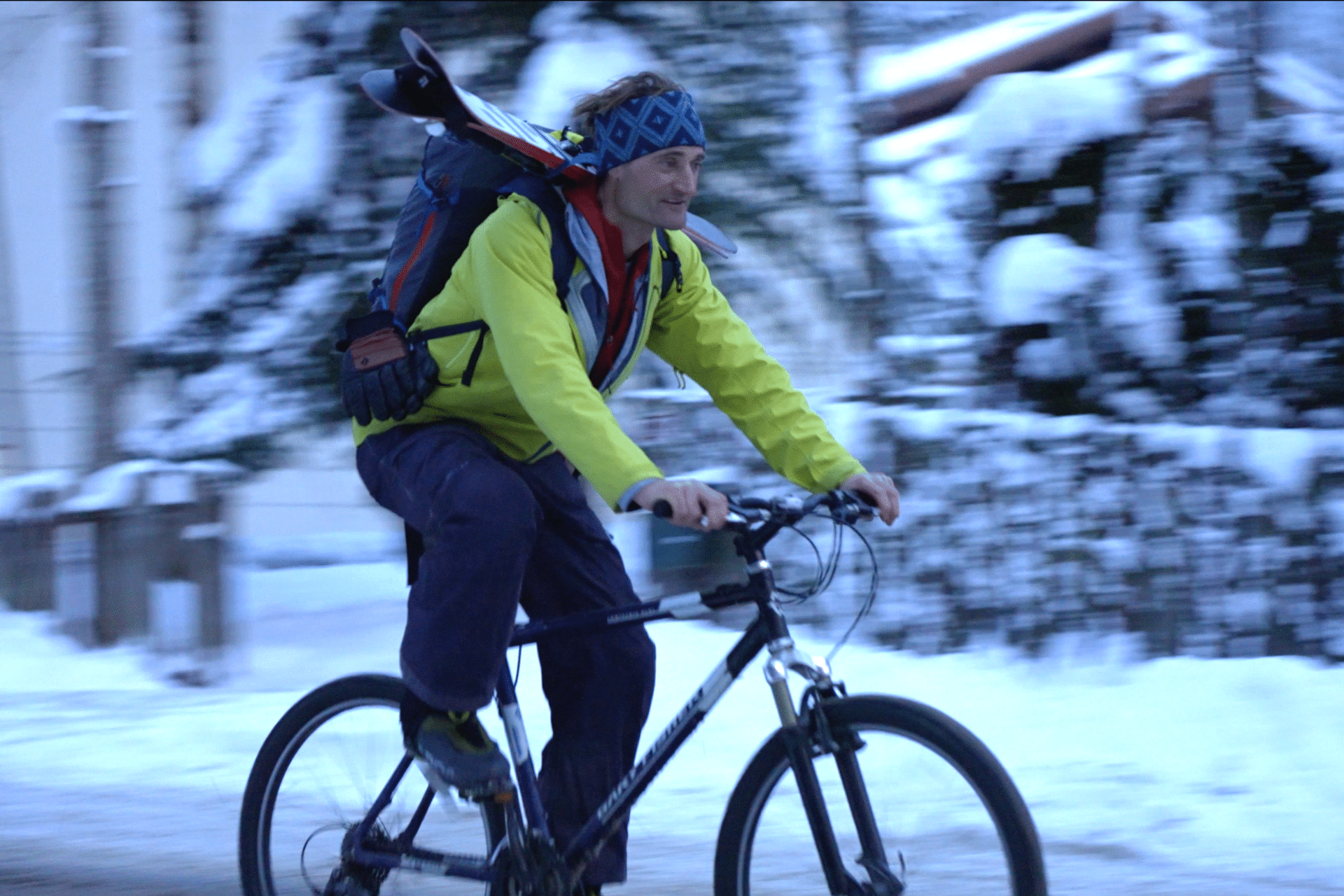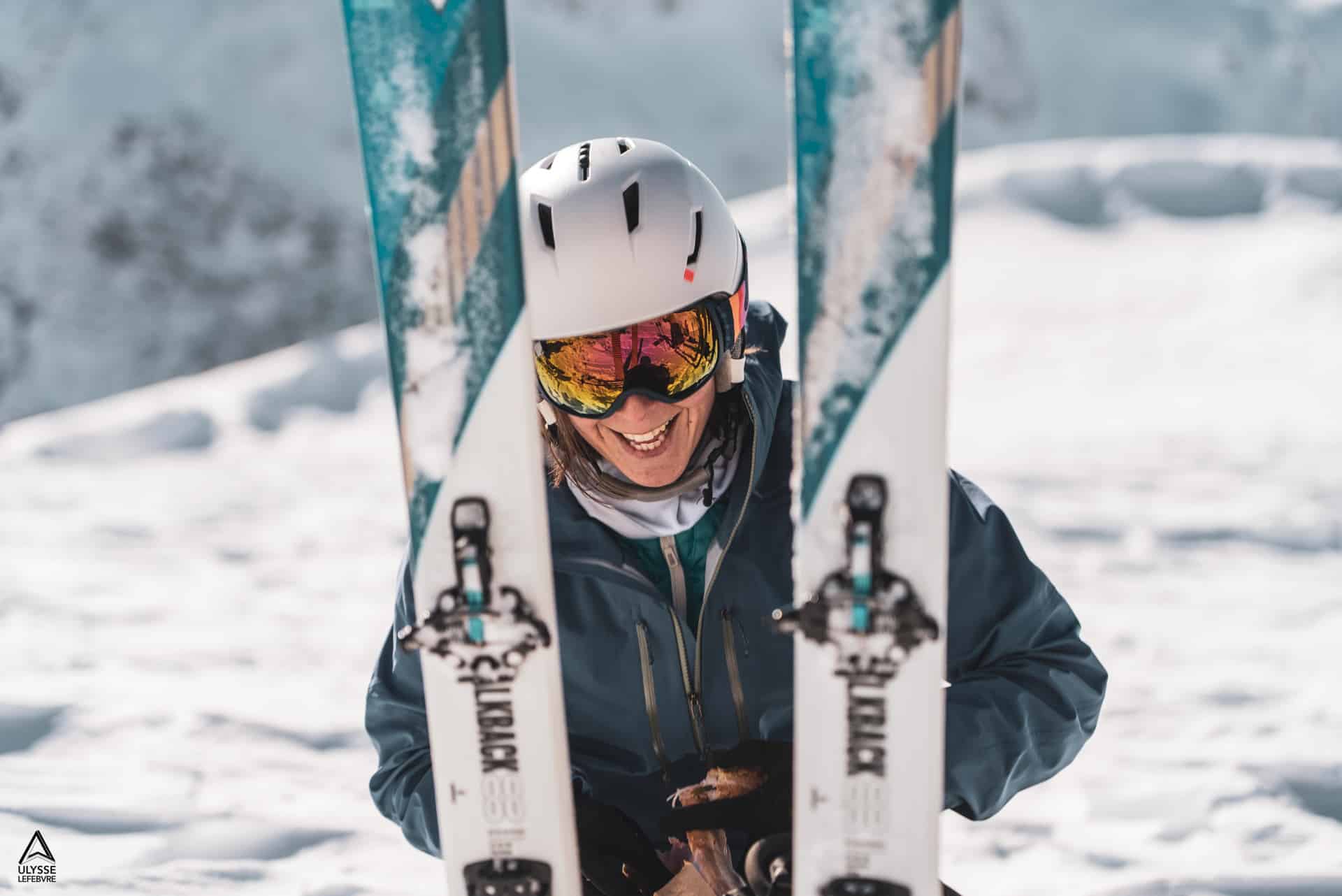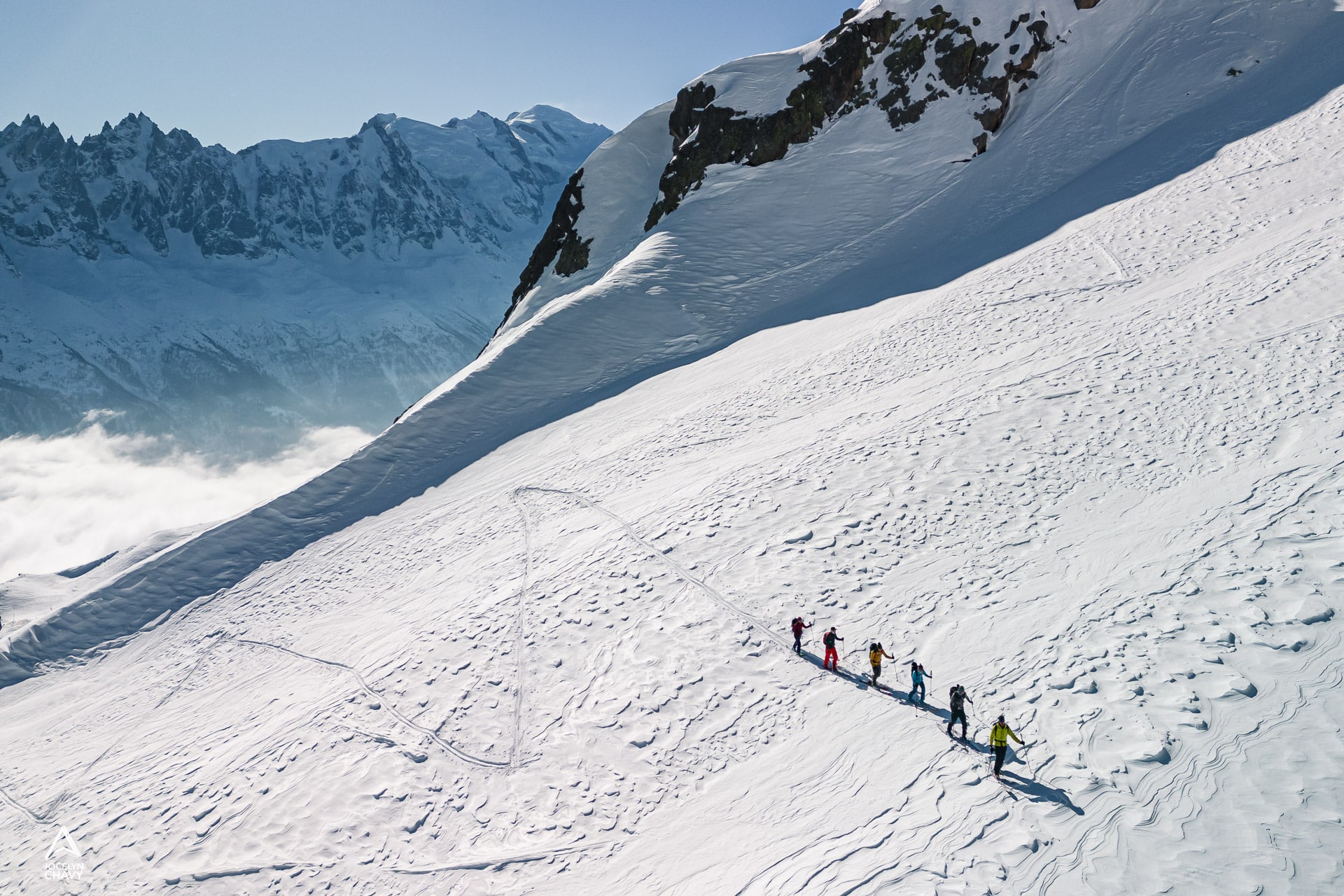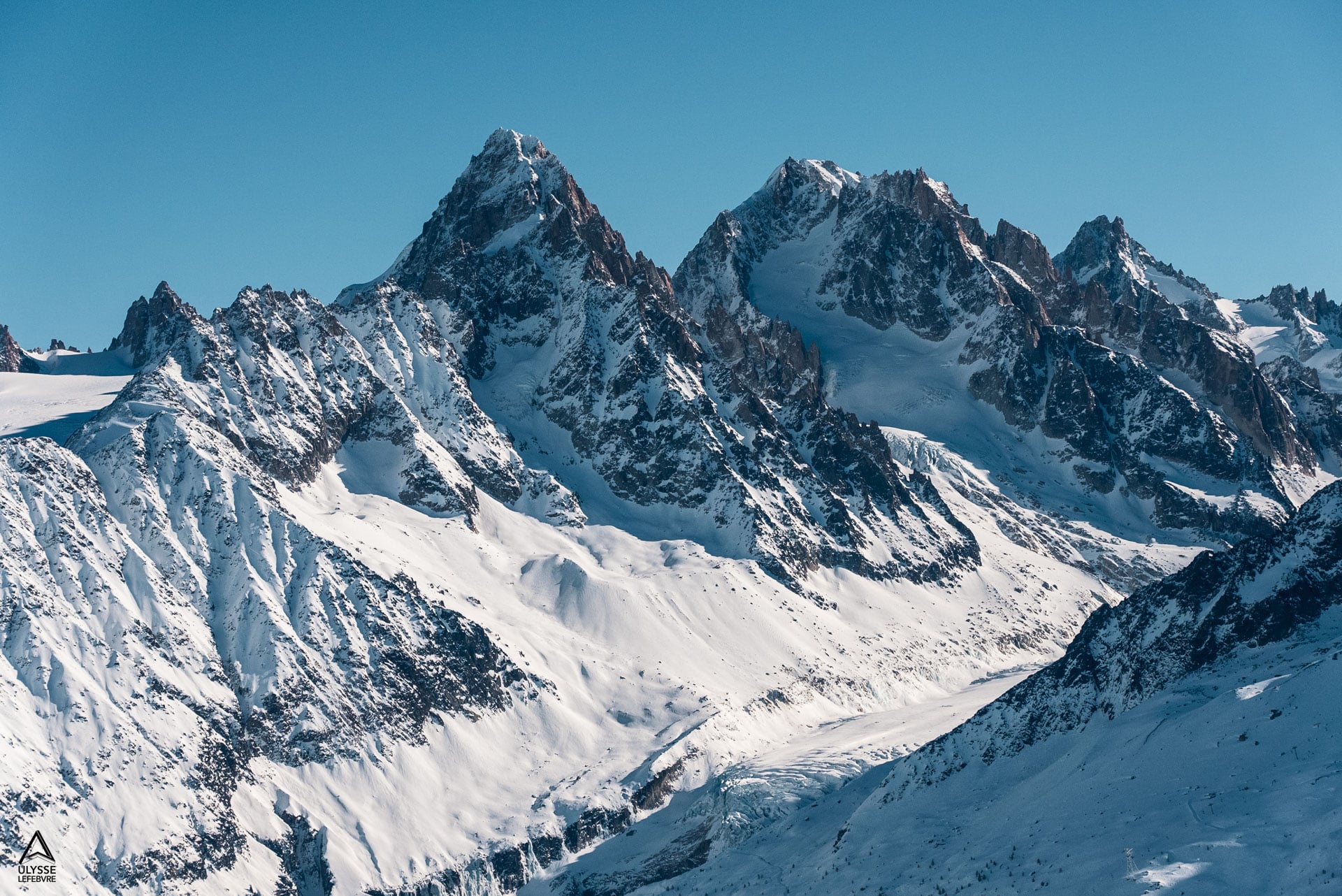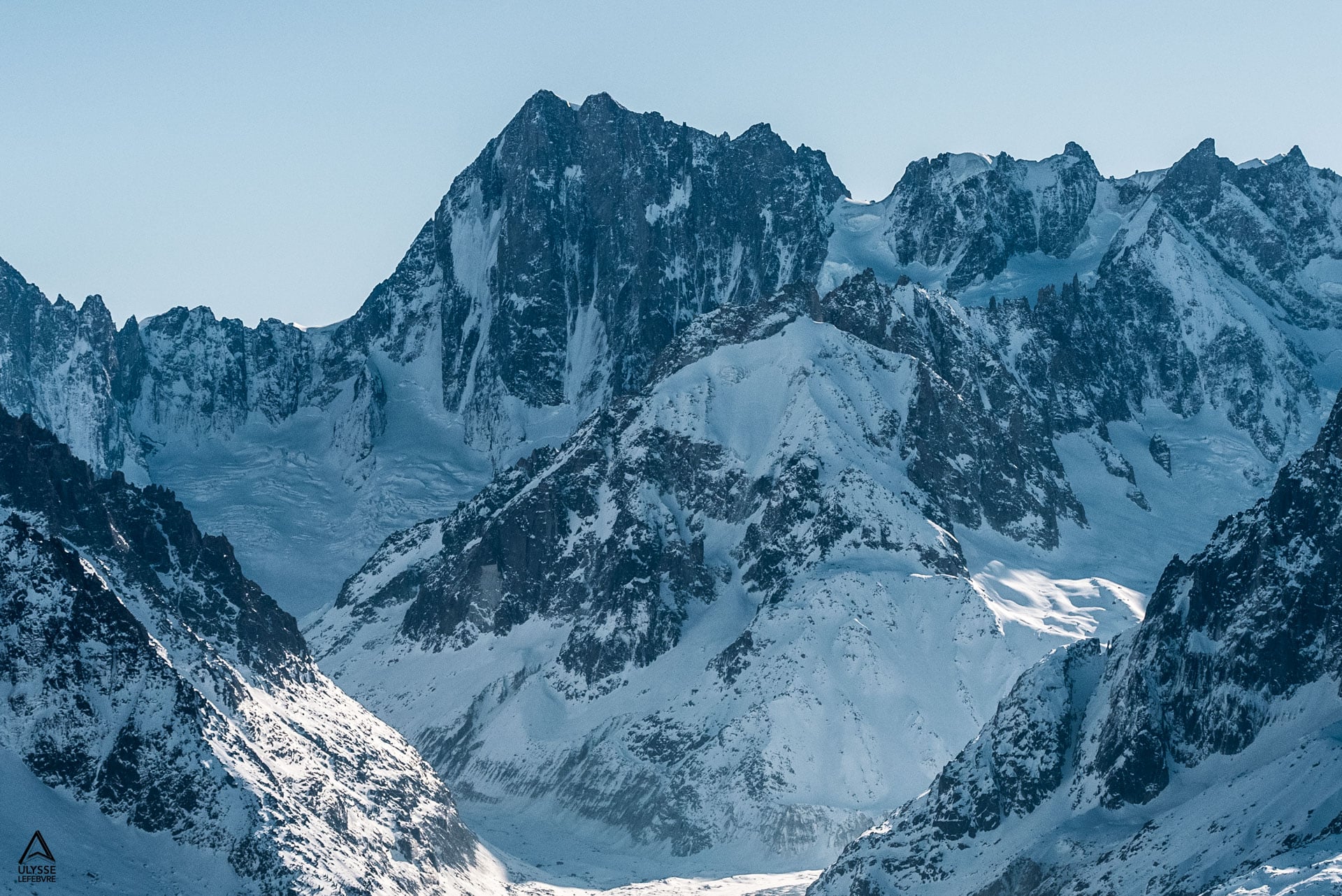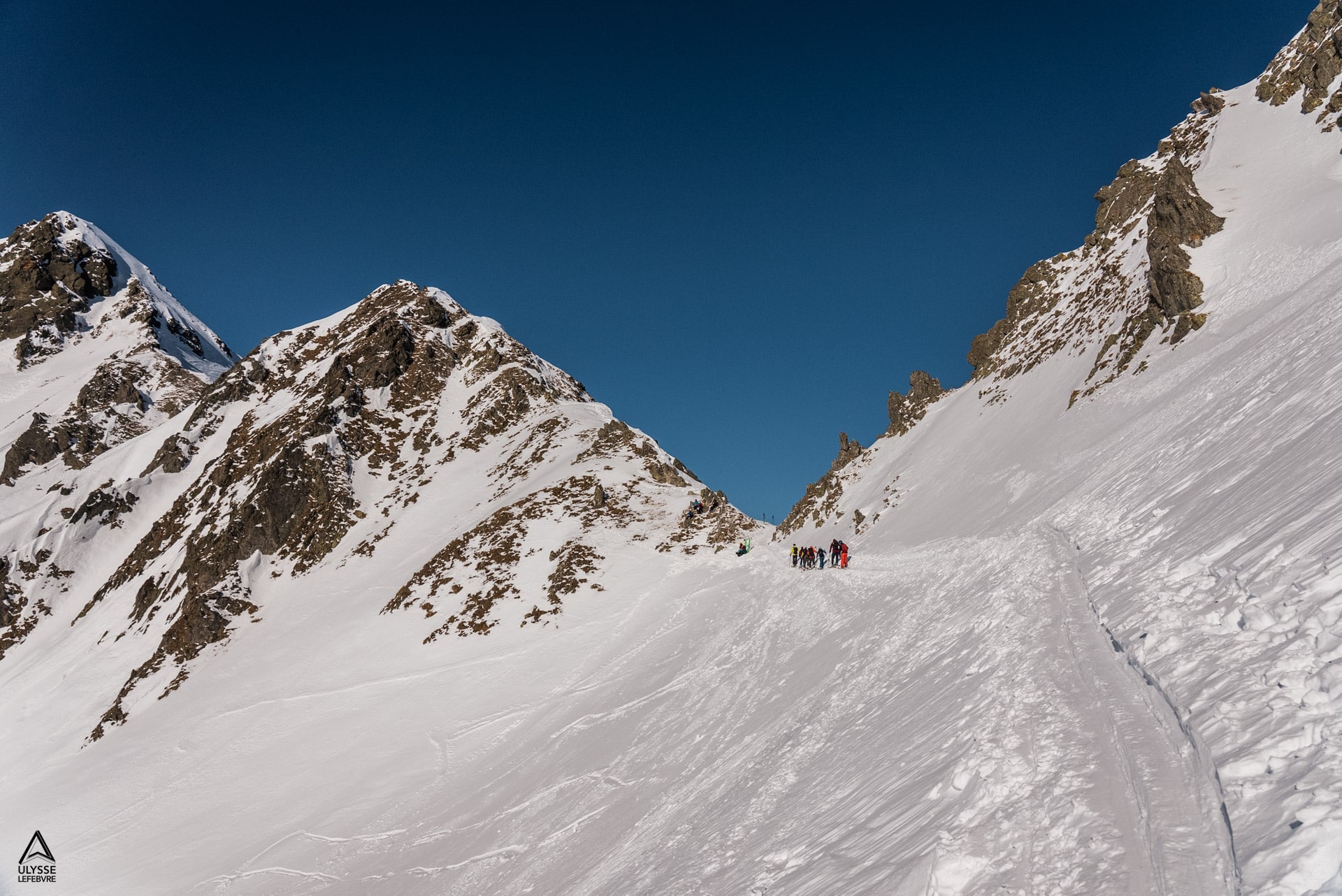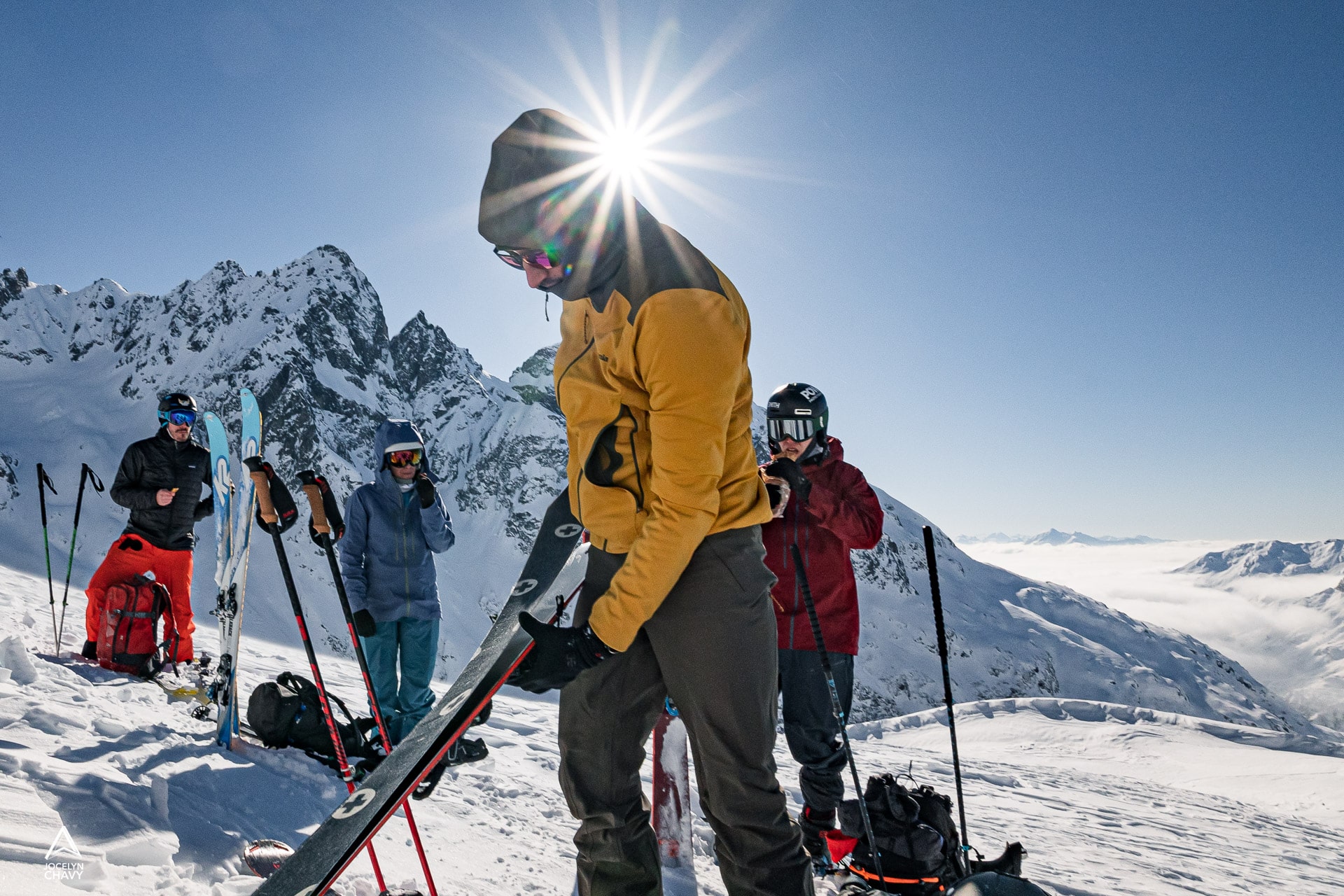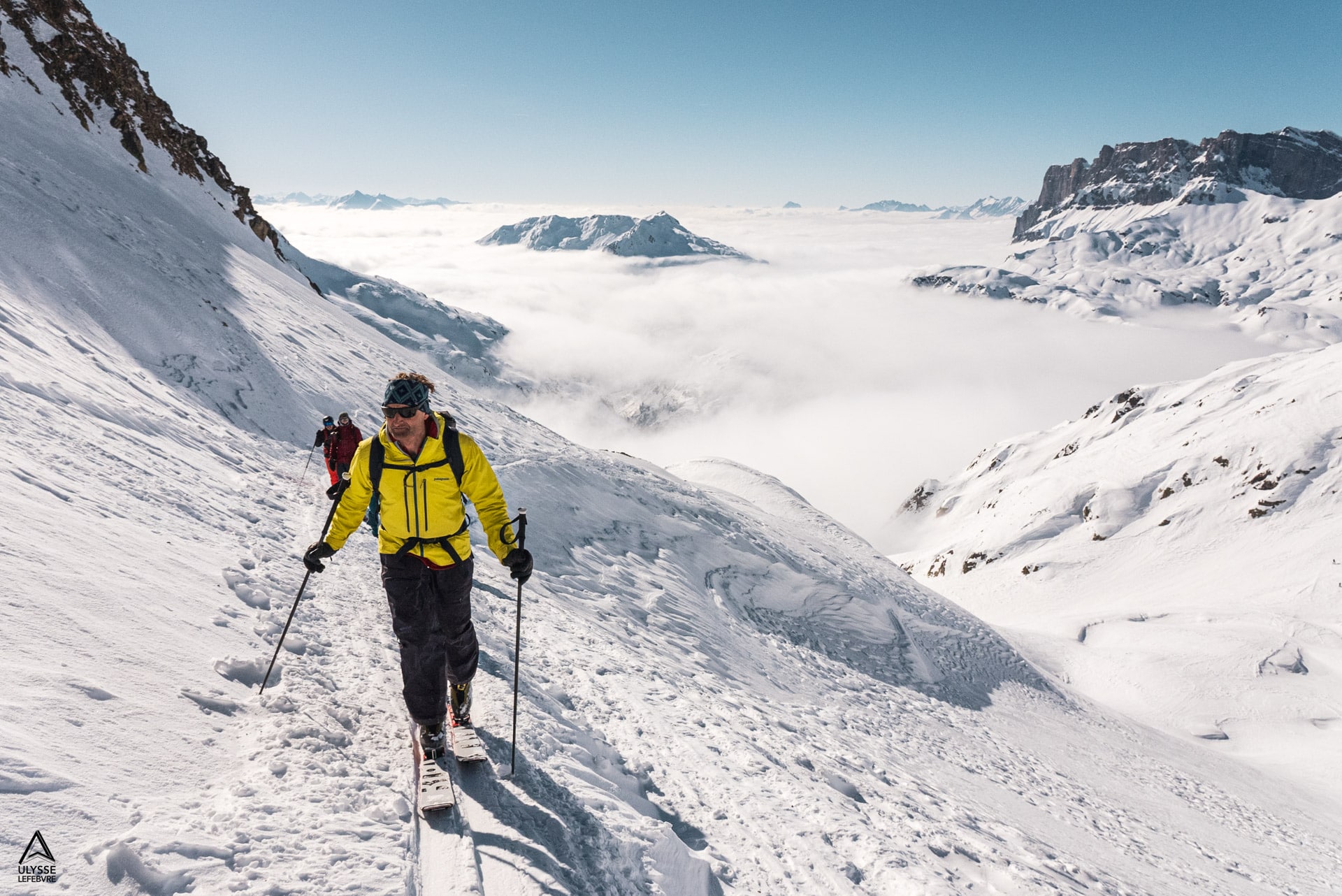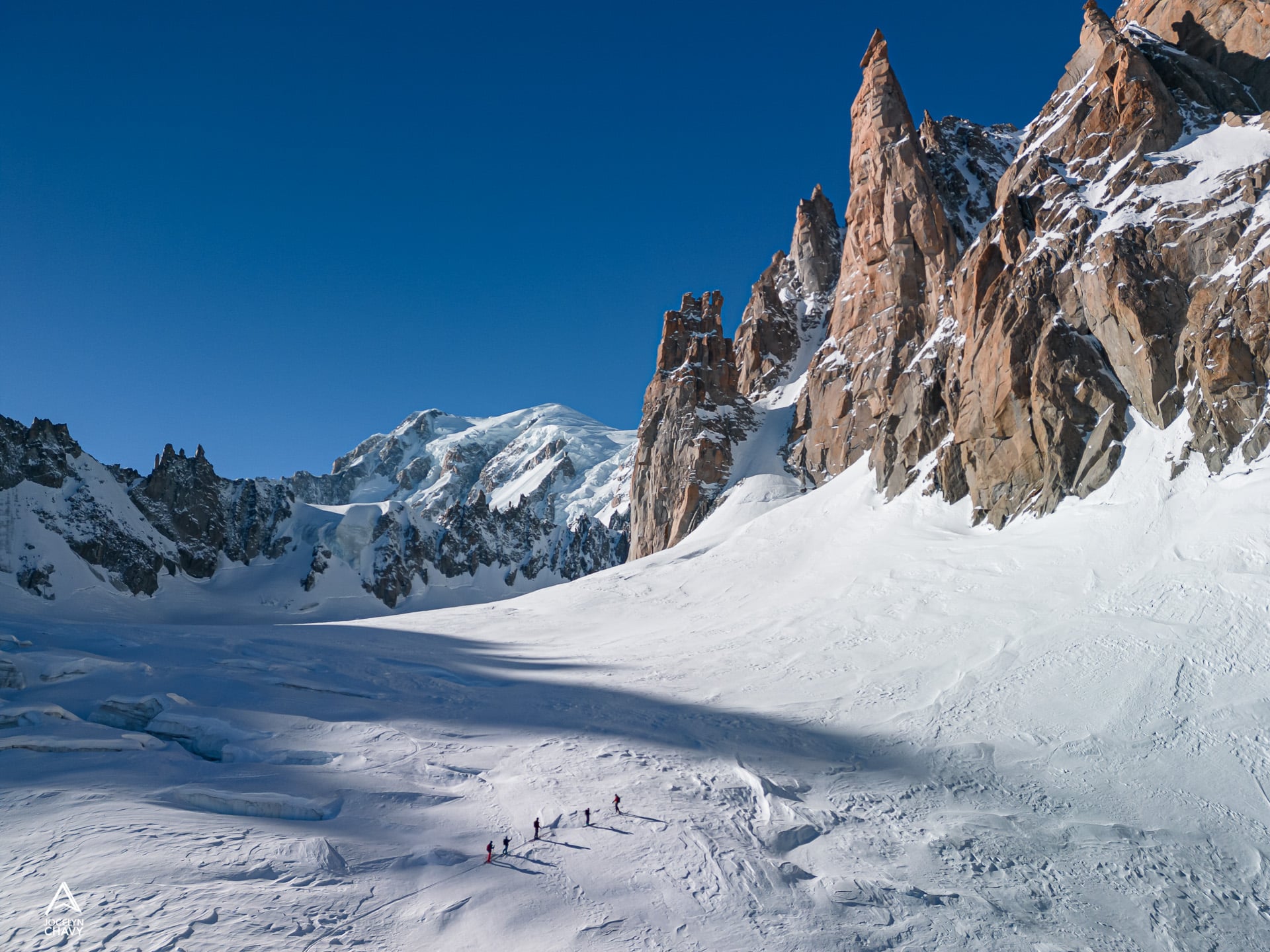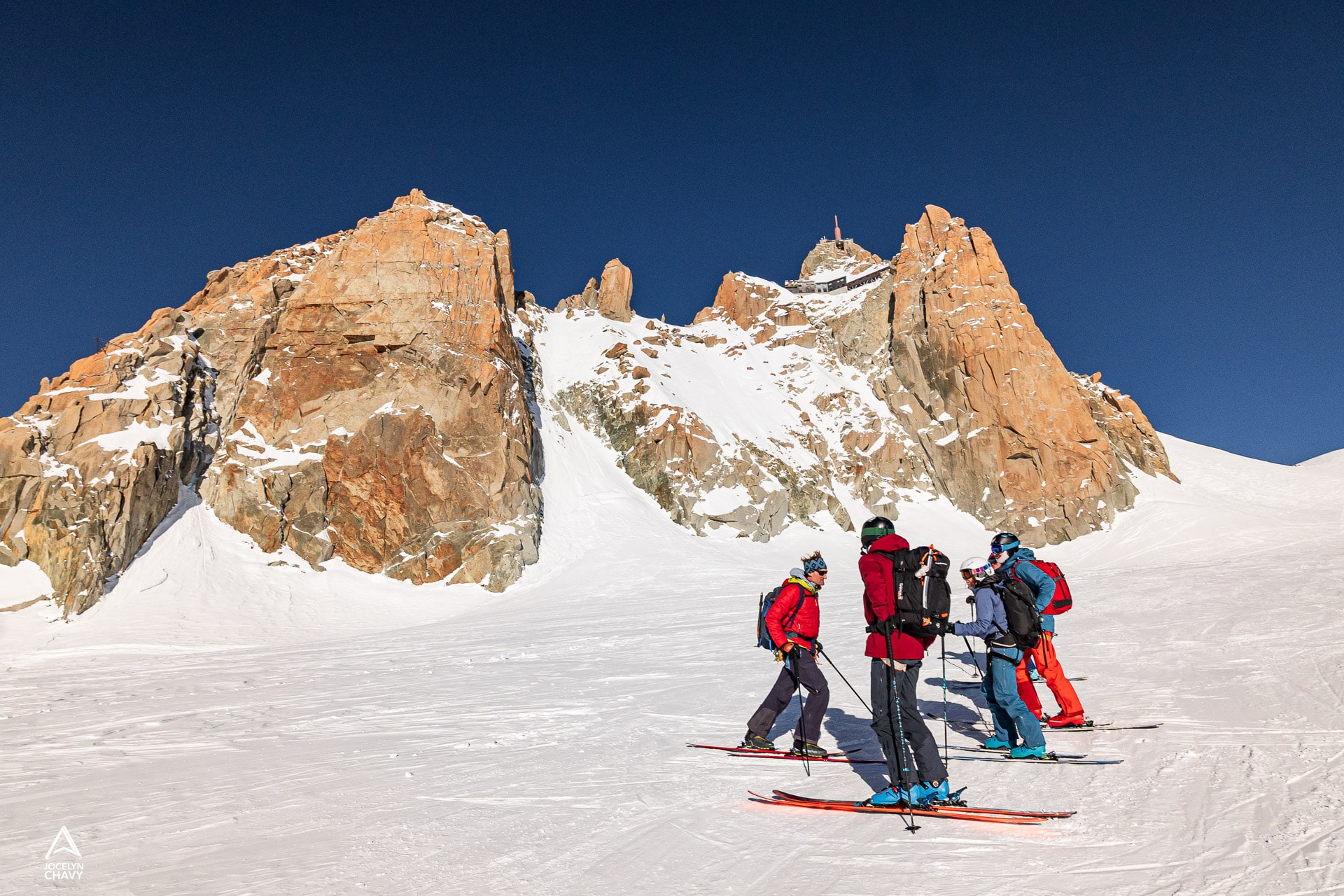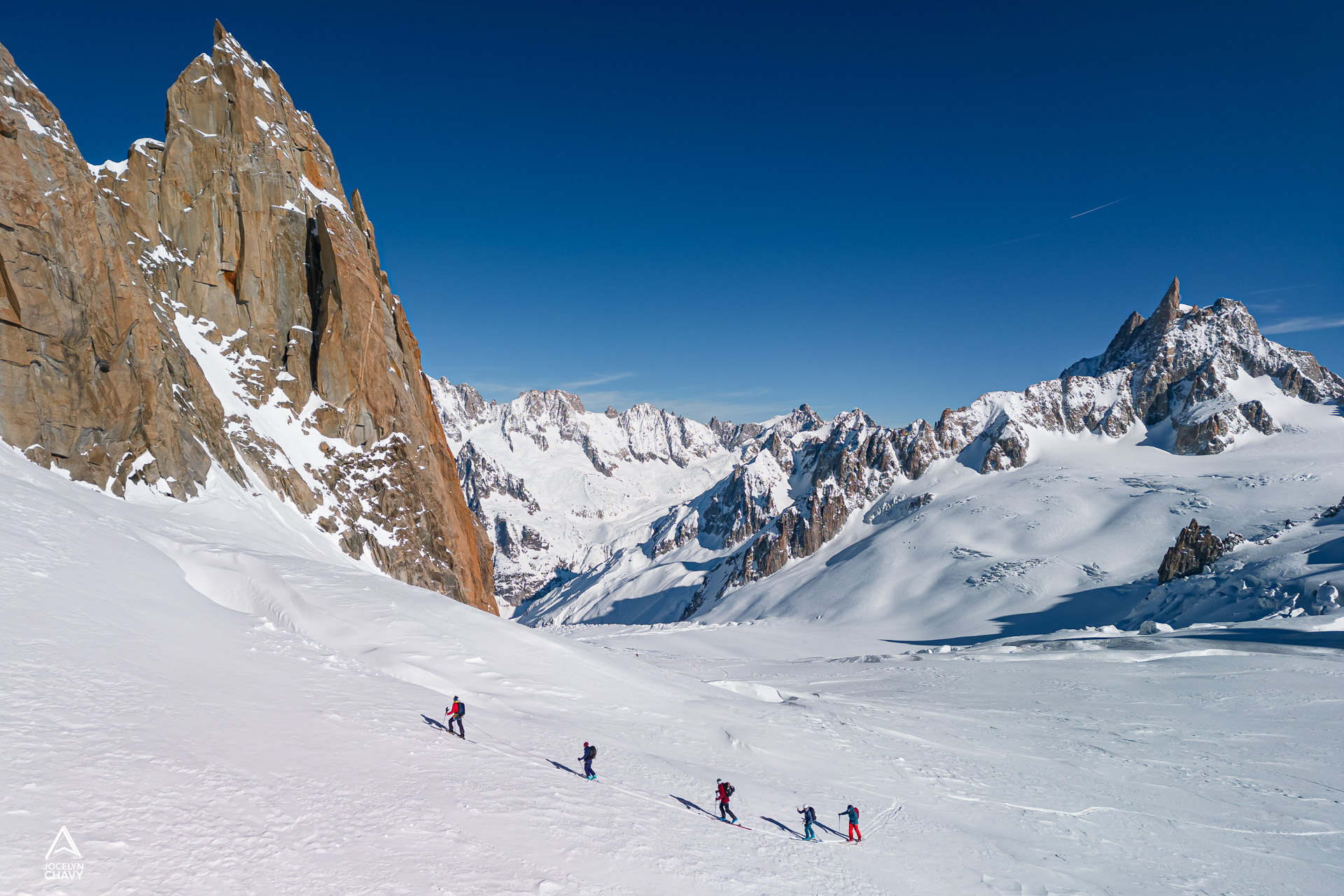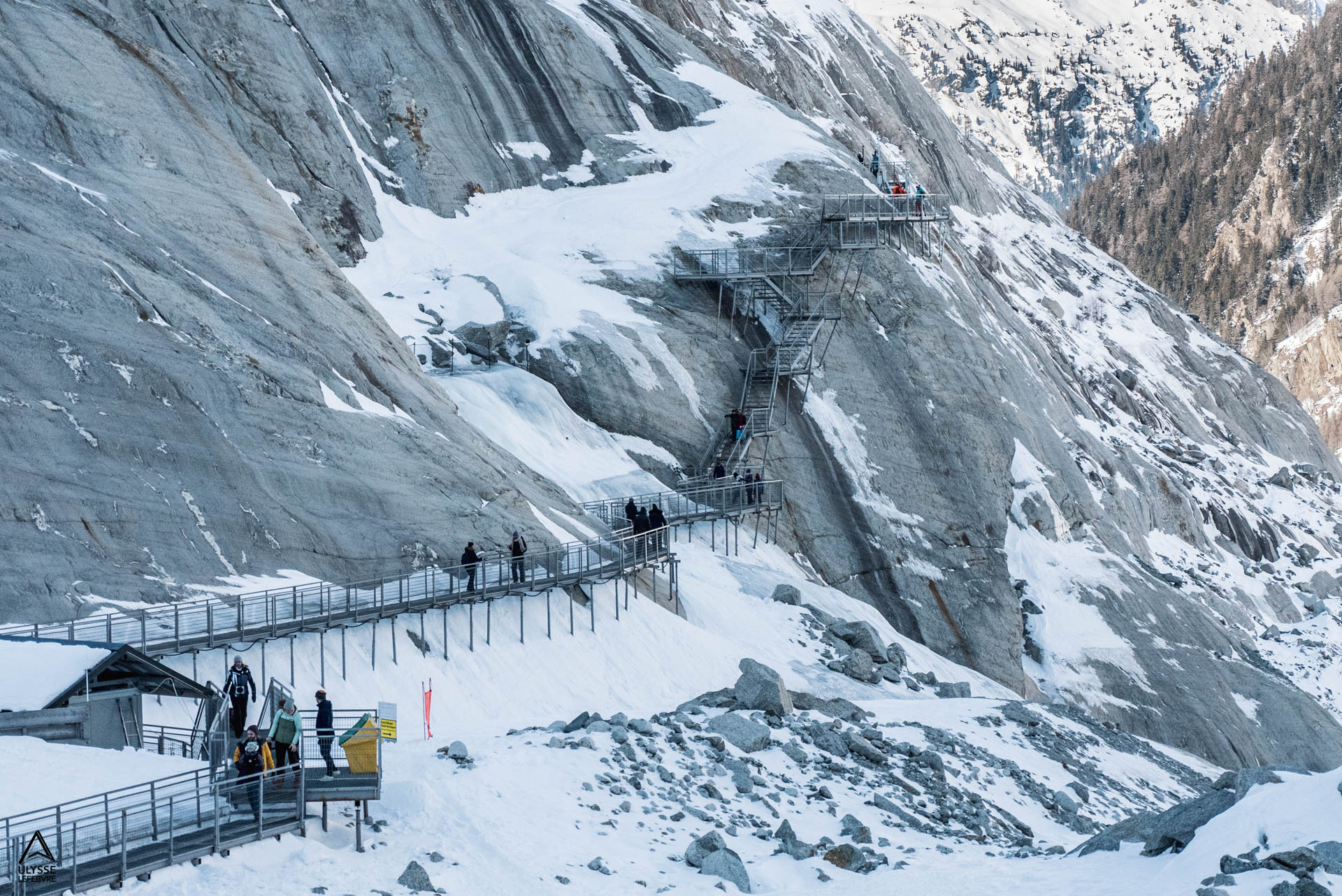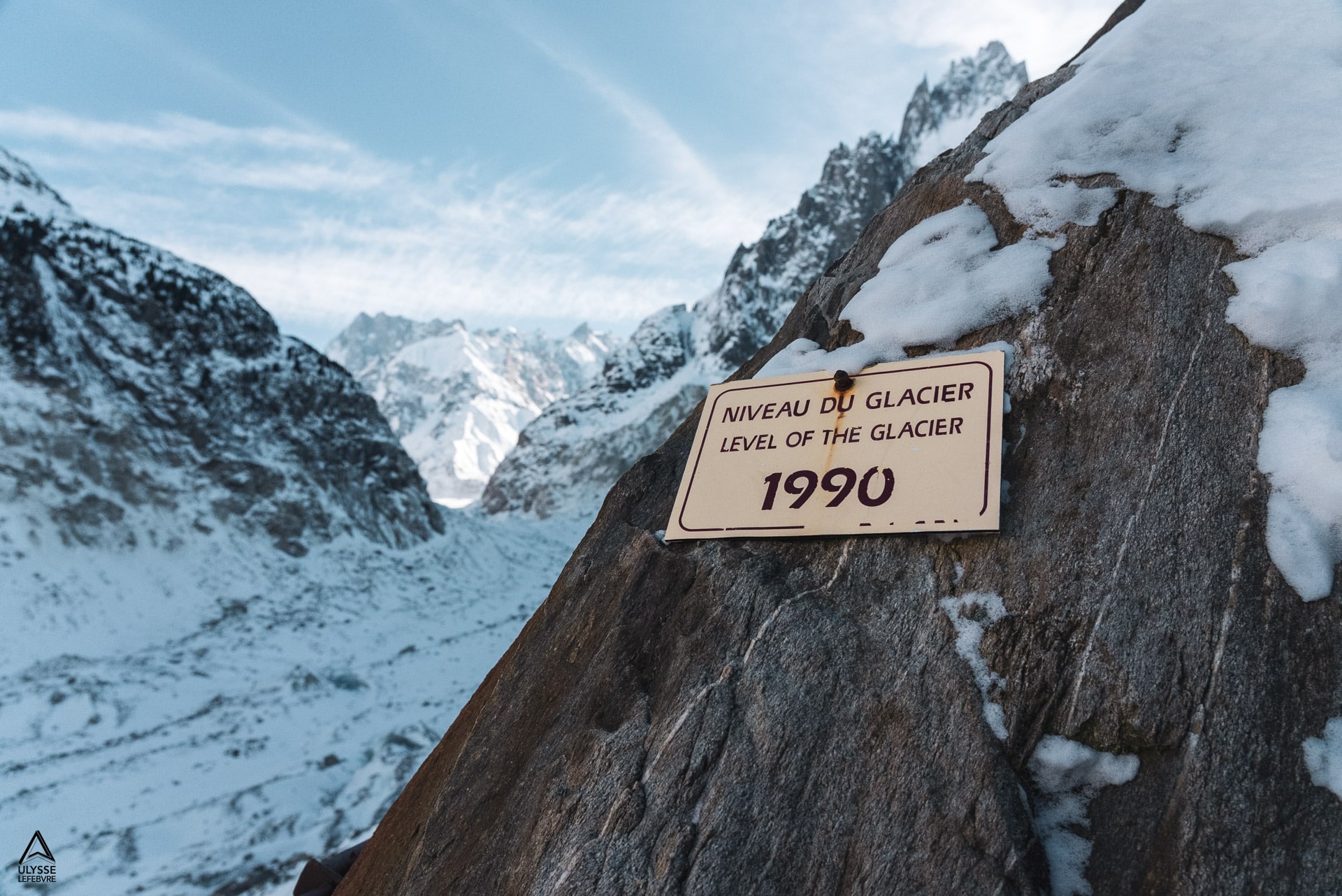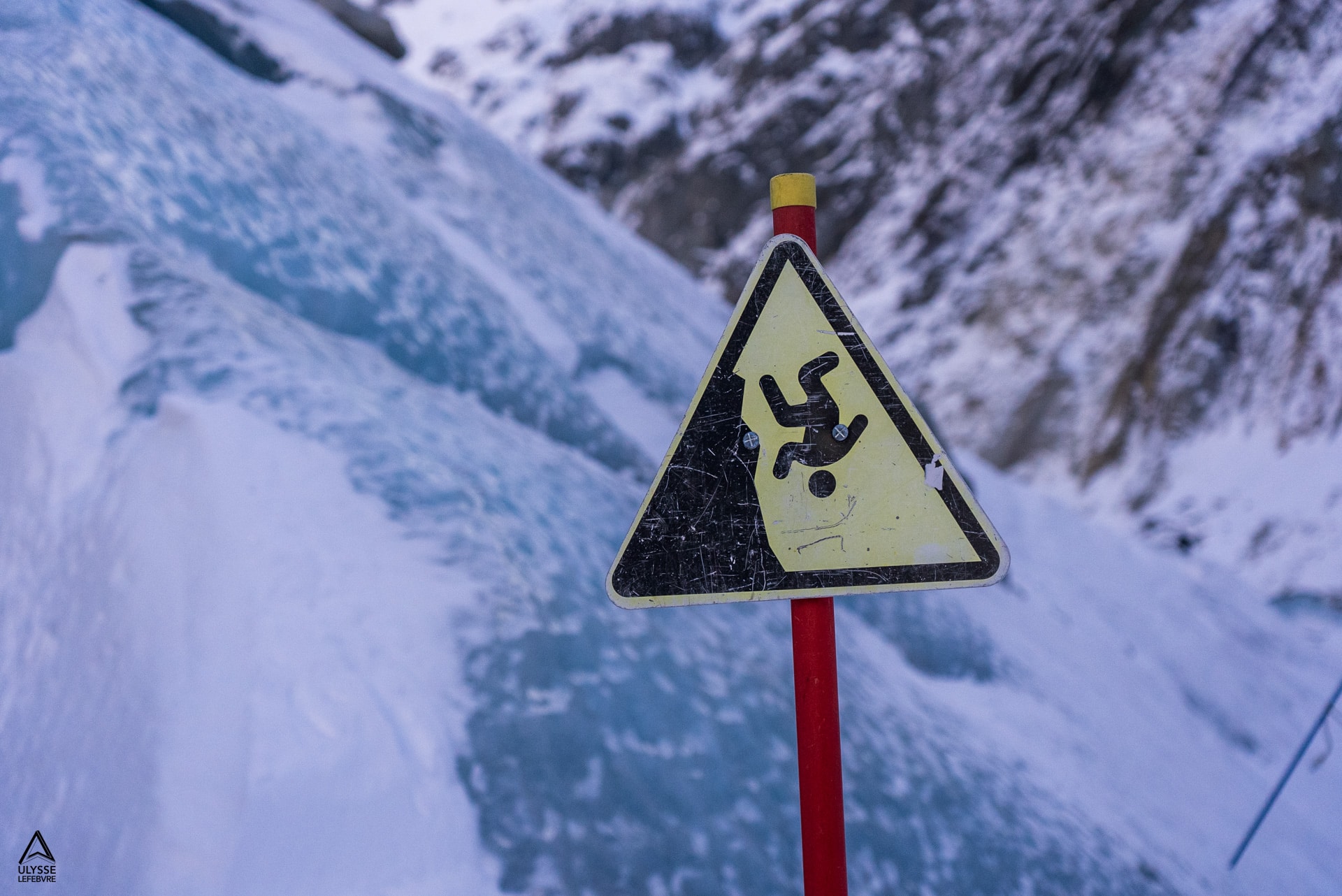Opening your eyes when skiing often comes down to anticipating the next snow change. However, all around us, there are many signs of another activity: that of the fauna and flora of course, which we rarely have the opportunity to observe if we are not attentive, but also the slower movements of the mountain itself, and the evolution of its glaciers and rocks, all witnesses of global warming. Jon, a high mountain guide and Patagonia ambassador, and Irene, director of CREA, a hiking guide and nature specialist, both based in Chamonix, make a great deal of opening the eyes of their clients and fellow climbers to this fragile environment. Here is a look back at a weekend of skiing, from the Aiguilles Rouges to the Combe Maudite, in the Mont-Blanc.
It may be a trend but trying to follow it remains a challenge: skiing clean, meaning “going up and down the mountain with the least possible impact”. Of course, not all the participants of this ski weekend went to Chamonix by bike. But this morning, at the bus stop, everyone has the feeling to discover something a little bit new, by going to the departure of Flégère by public transport. A small beginning? A start nonetheless. And when Jon Bracey, the guide, arrives by bike, skis on the back, we say to ourselves that we are in the real!
They are lucky enough
To be accompanied by two specialists:
Jon, high mountain guide
And Irène, specialist in mountain fauna and flora
With his permanent smile and his very frank British accent, Jon is one of the most Chamonix-like English guides around. One has seen him in very hard and committed mountaineering routes. But today, the objective is to ski for fun, and in the sun please! Snowleader, with Patagonia, has organized a weekend in the Mecca of mountaineering and skiing for a few motivated and rigorously selected clients. And to make sure that the sport takes on its full meaning, they are lucky enough to be accompanied by two specialists in their field: Jon, a high mountain guide and Patagonia ambassador, and Irene, director of CREA, a mid-mountain guide and specialist in mountain fauna and flora.
The classic Bérard-Crochues loop in the Aiguilles Rouges also seems to be the perfect place to observe the traces of life around. Whether it is the fauna or the flora, the skiers that we are are not the only living beings in the winter mountain, even if it often seems deserted.
Briefing on the fauna of the Aiguilles Rouges nature reserve by Irène Alvarez, from CREA Mont-Blanc. ©Jocelyn Chavy
Bérard-Crochues: skiing in the heart of a nature reserve
At the col de l’Index, we find Irène, binoculars (almost always) in hand. For many years, she has been observing, analyzing, listing and studying everything that lives in the mountains. She even co-created the CREA which has become the reference organization in terms of environmental knowledge in the mountains.
Faced with our unbearable desire to fight with the snow, she calms our ardor and gently sets the record straight: “The idea is that the mountain is not just a decor, to see what happens around and what our practice of ski touring implies for all the living beings of the massif.” This does not prevent her from being the first to draw the skins to start the climb to the Aiguilles Crochues pass (2704m).
There, the landscape opens up to an extraordinary panorama: the Mont-Blanc massif unfolds before our eyes, from the Chardonnet to the highest point at 4808m, passing by the Verte, the Drus and even the Grand Jorasses at the bottom of the Leschaux basin.
It is easier to observe these summits than the life that surrounds us. However, it is there as Irene reminds us of it: “Our main impact is the disturbance of the fauna in winter. When you go off-piste or ski touring, you have to be careful. This is particularly true at the edge of the forest, where many animals are concentrated.” It is true that at a certain altitude, we observe mostly discreet traces of passage: chamois droppings, discreet ibex in the distance in the rocks … A discretion that would almost make us forget their presence.
“It’s a real learning process to observe. And then to take pleasure in observing.” This pleasure is evident with Irene, who takes out her binoculars very often. She can even give you the pedigree of the yellow-billed choughs that we meet, thanks to the colored rings that they have on their legs. “We’ve been banding the choughds for 30 years with a unique four-color code. That way, after spotting the four colors with binoculars, I can find the bird very accurately in my database, on my phone, right there with you.” Or how to get to know the birds around us from a distance. And to see with a new eye these yellow-billed choughs which like to twirl at the collar of the Crochues or Bérard, attentive to the crumbs of our sandwiches.
The rise of participative sciences
Attention and participation can also be had back home and become an actor in the observation of wildlife through the Wild Mont Blanc program as Irene explains: “Everyone can get involved by helping us identify the animals photographed by our 30 automatic cameras spread throughout the massif. Everyone can register and then suggest the name of the animal they observe on one of the 30 million photos posted online.” This participatory science program is a useful way to observe wildlife from a distance and help the CREA to survey species populations.
Participatory science is the up-and-coming mode of engagement, where scientists and the general public work hand in hand. Among the existing programs in the mountains, we can mention CIMaE, a French program to study the evolution of high altitude wetlands, as it exists in the Aiguilles Rouges, supported by France Nature Environnement.
Or how climate change disrupts adaptation processes
that have been in place for thousands of years
Do not disturb
“But what color is the mountain hare right now?” asks Romain, an enthusiastic skier participating in the weekend and lost in his search on Google image which shows him the animal as brown or white. “Another current issue is the decrease in snow cover and therefore the shift in color of species, such as the mountain hare, which finds itself with its white coat against a background of rock and exposed grass”, explains Irene. Or how climate change disrupts adaptation processes that have been in place for thousands of years…
Behind the pass, we start the long descent of the combe de Bérard, heart of the Aiguilles Rouges nature reserve, in a snow, let’s say, very 2023. But it doesn’t matter, the only pleasure of skiing is increased by the satisfaction of having discovered a little more than the simple sport practice.
Extract of the Aiguilles Rouges sector, on the Biodiv map.
Back in the Bérard valley, Irène reminds us that the number one rule, the simplest one, is not to disturb: “Most of the time, we can think of skiing in the same track in the forest zone. We can also locate the funnel zones, where we know that skiers and animals are forced to pass in the same place, and therefore to rub shoulders. On a larger scale, we can also check in advance if our route is affected by a protected area.” And in return, everyone will be able to contribute to the device by noting possible encounters, thus giving all its meaning to this collective project.
For that, we can only recommend to take a look at the Biodiv device, carried by the French protective league of birds Ligue protectrice des oiseaux (LPO). This participative tool lists the protected areas but also the places where the presence of wild fauna or flora, sensitive to disturbance, is observed.
The Combe Maudite
The next day, we go to the other side of the valley, in the heart of the Mont-Blanc massif. Direction the Vallée Blanche: more than twenty kilometers of ski descent, surrounded by grandiose summits and impressive glaciers. But Jon doesn’t want to stop at the descent and takes us out for a nice detour: “We’re going to go up to the Combe Maudite. It’s a pretty wild place, away from the classic Vallée Blanche.“
The climate emergency
More than a detour, we enter another dimension: the orange granite towers stand all around. Welcome to the paradise of high mountain climbing and mixed mountaineering in the hidden corridors. Grand Capucin, Pointe Adolphe Rey, Trident du Tacul… It is an extraordinary landscape that seems to have been frozen for thousands of years.
However, it is not so. The mountain moves, erodes, and this process accelerates with global warming: “With the disappearance of permafrost, the rock is less held in place. Rocks fall and massive collapses are becoming more and more regular.” Like at the bottom of the Trident du Tacul (3639m), where part of the historic Lépiney route ended up on the glacier in September 2018. “I was in the route a week before!” confides Jon, with a slightly tense smile this time…
one knows the role of the hummingbird
in Stopping the fire
It is difficult for everyone not to feel very small in this geomorphological evolution whose long time scale (millions of years) is now being hit hard by the short time of more and more frequent land movements. A form of climate emergency in short. However, one knows the role of the hummingbird in stopping the fire. “On the one hand, everyone adapts as a guide“, explains Jon, who has a front row seat to the changes, “with shorter ice climbing seasons and classic mountaineering seasons that are shifted to spring. But on the other hand, we also know that there is an urgency to act collectively.“
How can we do this? Irene reminds us that “the main impact and the one that the community has the most control over is transportation.” How do we get to the starting point of a mountain adventure? How do you reduce greenhouse gas emissions (train, bicycle) or how do you share them (carpooling)? We all think about Jon who came by bike this morning and we replay the movie of our exchanges to come to Chamonix by train… before giving up by K.O. facing the inefficiency of the Annecy-Chamonix line. Public transport to the mountains, a strong development axis for the community! Thibault testifies to the strong involvement of the association Protect our winters France (POW) on this theme of the train. On this subject, Switzerland is often taken as an example for its numerous lines that go far into the Alpine valleys. The only thing left to do is to speak out to move the lines politically speaking.
Beyond the consequences for the mountaineers, it is an entire ecosystem that is impacted. Just look at the level of the Mer de Glace which goes down year after year, and the steps which are added to go back up to the Montenvers train station. A melting glacier is not only a landscape that changes. It is also the flow of water and water reserves that change further down the valley. These changes are profound and the human impact is proven, even if not everyone agrees on the temporality.
Irene agrees that “what is very important is to at least be aware of our impact.” Thibault, one of the participants sums up: “It is our way of practicing sports that needs to be reviewed. We have to stop looking only for the performance but also for the journey that goes with it, and take our time.” And consider a mountain adventure as something other than a daily consumption, something other than an activity of the day, before something else the next day. The wildlife and the peaks remind us of this, through the words of Irene and Jon who spend a lot of time in the mountains. Taking time to change things without delay: is this the first step towards change?


